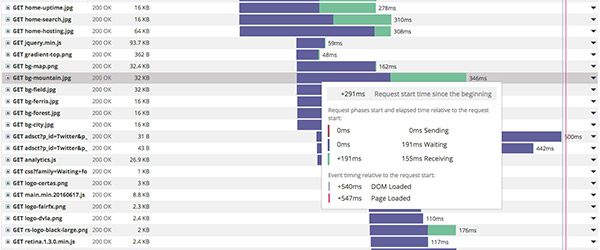Synthetic User Journey Monitoring is a crucial piece of the puzzle when it comes to platform performance monitoring. However in our conversations with business owners and tech teams there is occasionally some confusion over the concepts behind this vital technology.
Uptime Monitoring is long established as a first line of defence for site/app assurance – so what is the difference between an uptime monitor and a user journey monitor?
First, here’s a bit of background…
Give or take a year the uptime market was born in or around 2005. Naturally, back then websites were generally less reliable which was due to a number of factors.
For example, the Internet in general was less reliable. The quality of hosting providers varied dramatically and generally the technologies we use today to make systems resilient just didn’t exist or if they did they were very expensive so less people could afford them.
In short, websites were up and down more which gave way for a generation of uptime monitoring companies. These companies took advantage of this gap in the market and answered a very simple question – is my site up?
Today’s assurance dilemmas
Naturally the world has moved on and today the IT landscape is a different place. Luckily many of the issues noted above are less prominent.
Today the issue faced by website managers is more complex and exists further up the stack at the application layer. Of course outages happen but they are less frequent. In addition there are now many ways to detect down time so the real problem faced by the modern web manager is application performance:
“Are the application processes working in a performant manner?”
“Are customers experiencing a fast and efficient service?”
“Is there an emerging problem that needs to be addressed?”
“How does our checkout perform when we scale?”
“Is our code error free?”
These are the modern challenges faced by web operations teams and website managers. This is why synthetic monitoring, or as we call it, Synthetic User Journey Monitoring has become the uptime monitor of today.
So what is the difference?
I would like to start by stating that an Uptime Monitor and a Synthetic User Journey are complementary technologies. Both have a role to play in assuring a digital asset. The role of the uptime monitor as the name suggests is to ensure that the website is available or online.
The User Journey however goes to the next level as it is interacting with the application. The User Journey’s role is to check that the application is working in a performant manner. It achieves this by mimicking a human interaction with the web app or website.

An eCommerce shopping site for example may be online but the product search may be broken or slow. In this scenario the uptime monitor would be totally unaware of this problem – but the user journey would trigger an error and notify the site owner.
Human actions – those imitated by the user journey monitor – are scripted and run regularly over an extended period (or indefinitely). This builds up a comprehensive data picture of app performance – vital for front and back-end development teams in pursuit of speed improvements. We can also run our journey tests from data centres all around the world, giving management a clear understanding of traffic and latency issues.

The primary role of a User Journey is to monitor the application process and measure it so that changes in performance can be detected. It’s secondary role is to identify code errors and again flag these to the IT team.
In summary, Uptime Monitoring is not dead – far from it – but the more common issue today is not whether the site is up or down but whether it is working as expected. Business owners and tech teams need this vital information in order to assure their online presence and their customers’ experience. Pursuit of this data has fuelled the need for an affordable way to measure the application or website.
This has lead to the rise of the User Journey Monitor, an elegantly simple solution to a complex and growing problem.






